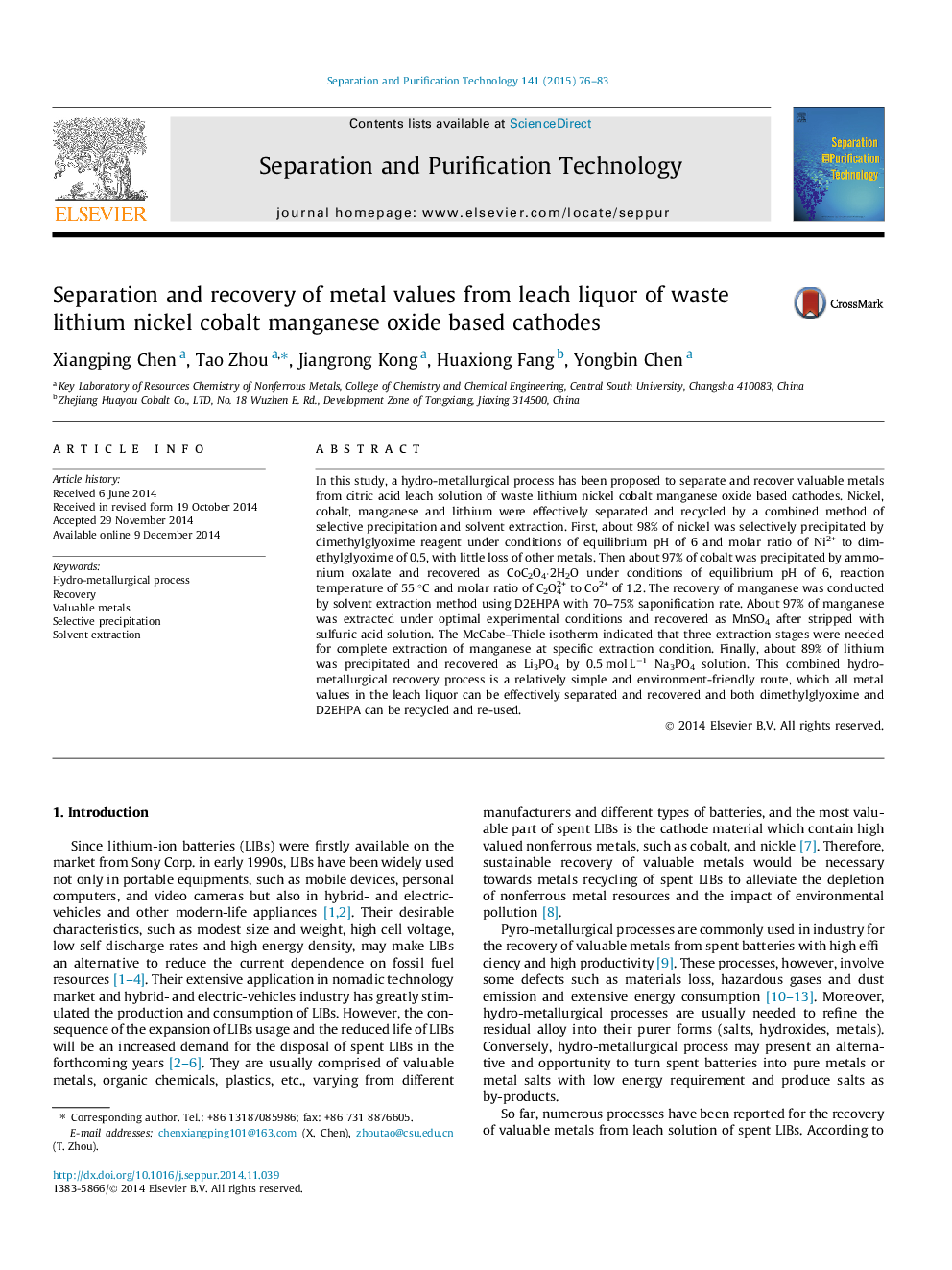| Article ID | Journal | Published Year | Pages | File Type |
|---|---|---|---|---|
| 640659 | Separation and Purification Technology | 2015 | 8 Pages |
•A combined hydro-metallurgical process has been proposed.•Nickle, cobalt and lithium were recovered by selective precipitation method.•Manganese was recovered by solvent extraction method.•This process was a relatively simple and environment-friendly route.•About 98%, 97%, 97% and 89% of Ni, Co, Mn and Li could be recovered.
In this study, a hydro-metallurgical process has been proposed to separate and recover valuable metals from citric acid leach solution of waste lithium nickel cobalt manganese oxide based cathodes. Nickel, cobalt, manganese and lithium were effectively separated and recycled by a combined method of selective precipitation and solvent extraction. First, about 98% of nickel was selectively precipitated by dimethylglyoxime reagent under conditions of equilibrium pH of 6 and molar ratio of Ni2+ to dimethylglyoxime of 0.5, with little loss of other metals. Then about 97% of cobalt was precipitated by ammonium oxalate and recovered as CoC2O4·2H2O under conditions of equilibrium pH of 6, reaction temperature of 55 °C and molar ratio of C2O42+ to Co2+ of 1.2. The recovery of manganese was conducted by solvent extraction method using D2EHPA with 70–75% saponification rate. About 97% of manganese was extracted under optimal experimental conditions and recovered as MnSO4 after stripped with sulfuric acid solution. The McCabe–Thiele isotherm indicated that three extraction stages were needed for complete extraction of manganese at specific extraction condition. Finally, about 89% of lithium was precipitated and recovered as Li3PO4 by 0.5 mol L−1 Na3PO4 solution. This combined hydro-metallurgical recovery process is a relatively simple and environment-friendly route, which all metal values in the leach liquor can be effectively separated and recovered and both dimethylglyoxime and D2EHPA can be recycled and re-used.
